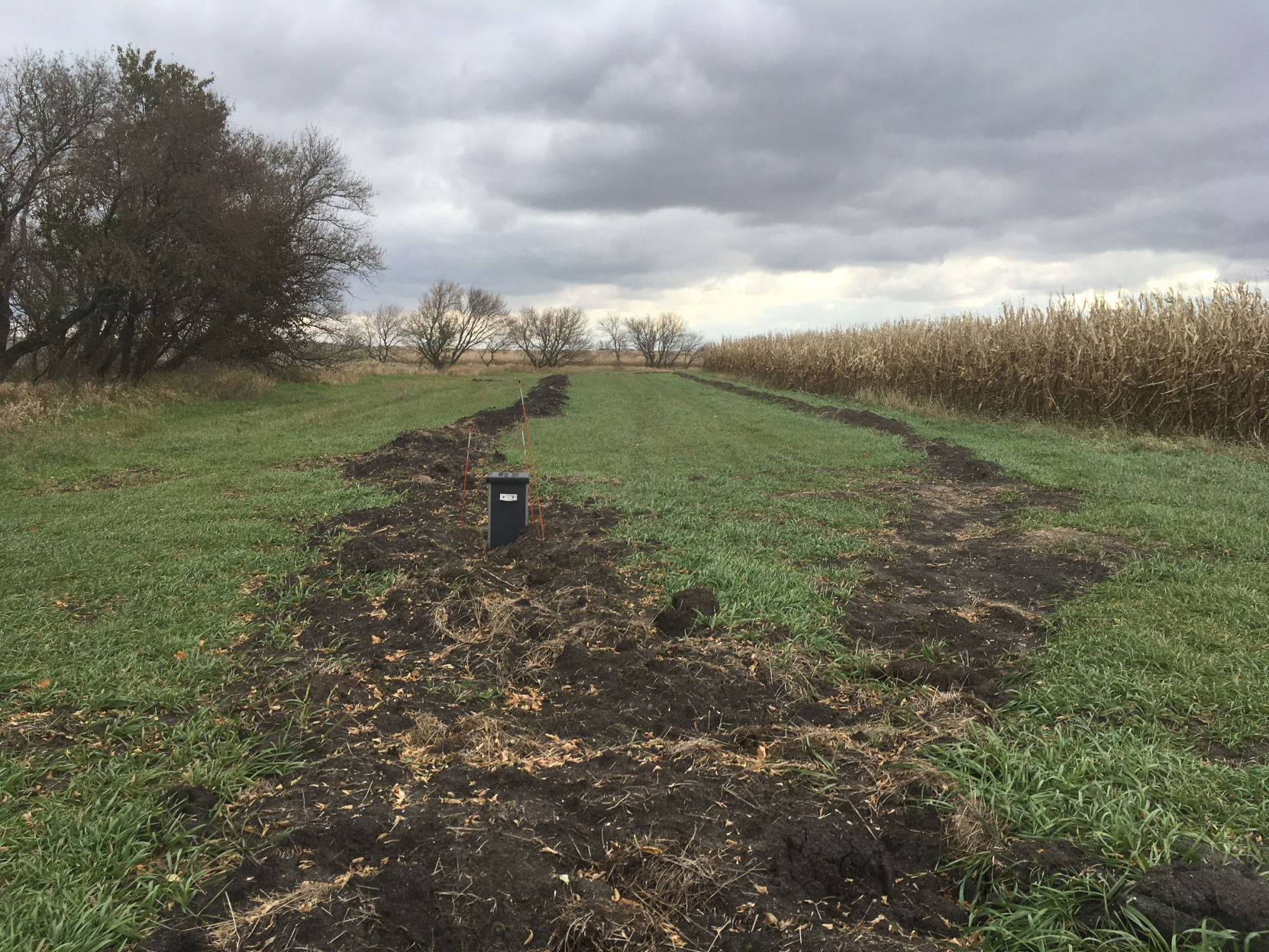Reducing nutrient loading through a new type of buffer system is showing promise in ultimately cutting nitrogen flows into the Gulf of Mexico.
Keegan Kult, executive director of the Agricultural Drainage Management Coalition, said the test project for a saturated buffer enhances a traditional filter strip and helps reduce the flow of nitrogen runoff from corn and soybean fields into tributaries and rivers. That reduction of nitrites is a win for agricultural producers who want to be better stewards and cost-efficient with their fertilizer application, for urban water treatment plant operators because it lessens their operational costs to provide drinking water that meets government standards and for the Gulf of Mexico marsh fields where effluent ultimately collects.
The ADMC is working in a collaboration with the Farm Service Agency and Natural Resources Conservation Service for several projects in recent years to gain research and the end result was fewer nitrates showing up in city drinking water supplies and it reduced 2 to 5 percent of the overall nitrogen load delivered to the Gulf of Mexico. Results from the demonstration projects from 2012 to 2015 and 2016 to 2017 were recently released.
Riparian buffers have been effective at removing nitrogen from surface flows and shallow subsurface ground water but in the tile-drained landscape of the Midwest, a significant portion of the nitrogen lost from the agricultural fields does not have the opportunity to interact with carbon rich buffers, Kult said. The result is the nitrogen continues to flow downstream.
The goal of a saturated buffer system is, through hydrology, to reconnect a subsurface drainage outlet with an edge-of-field buffer. It takes advantage of the denitrification and plant nutrient uptake opportunities known to exist in buffers with perennial vegetation, according to the ADMC.
One plus of the new process is a traditional riparian buffer remains in use, Kult said. The saturated buffer uses an underground structure to collect the runoff. A saturated buffer system has a control structure that diverts the flow from the outlet to a lateral distribution line. The lateral distribution line runs parallel to the buffer and, as the water is diverted to this line, saturation occurs. As this saturation, or lateral water movement through the buffer, occurs the vegetation naturally removes the nutrients in the water.
Enhancing a standard buffer with a saturated buffer, where applicable, could remove about 13 times the annual amount of nitrogen while making the practice six to 10 times more efficient in terms of dollars per pound of nitrogen removed, the report said.
The enhanced buffer could last 40 to 50 years with minimal maintenance, Kult said.
According to a news release, the ADMC worked with the FSA to monitor seven Midwest saturated buffer sites distributed throughout Iowa, Illinois and Minnesota from October 2017 to August 2018. The buffer sites had an average nitrate concentration reduction ranging from 41 to 98 percent during the monitoring period. Nitrate load reductions ranged from 10 to 194 pounds.
ADMC entered into a contract with FSA to provide a larger dataset to support the decision to invest in saturated buffers within the CLEAR initiative, an acronym for Clear Lakes, Estuaries and Rivers.
Producers who participated in the demonstration project indicated they were glad to do so, Kult said.
“Farmers like the feedback and from the actual data they can see if it is working,” he said.
The average installation cost of the seven monitored saturated buffers was $3,584 and they have operated at an efficiency of $1.22 per pound of nitrogen in the monitoring process.
Large-scale model
ADMC worked with the Department of Crop Sciences at the University of Illinois, Urbana-Champaign, which did a modeling run in 11 states to see if the saturated buffers could work on a larger scale. The Illinois model revealed an estimated 46,920 miles of cumulative stream bank suitable for saturated buffers.
“Potentially the modeling run shows we can get 9.5 million acres through 11 states in the Midwest,” Kult said. “That is about 22 percent of the drained landscape through the designated states.”
Those states are Iowa, Illinois, Ohio, Minnesota, Indiana, Missouri, Michigan, Nebraska, South Dakota, North Dakota and Wisconsin.
“We are at a point where we can start to promote this on a bigger scale,” Kult said. “We have enough data to work with and put it in the ground where it works. The next step is to get it into the landscape.”
The 2018 farm bill provides an opportunity for producers to sign up as a result of language that allows monies from the Conservation Reserve Program to help as well as from NRCS’s Environmental Quality Incentives Program plus state agencies may have funding because of the project’s data that indicates success in working with the CLEAR initiative.
Moving forward, Kult encourages producers to stay connected with their NRCS offices about funding opportunities.
Dave Bergmeier can be reached at 620-227-1822 or [email protected].




